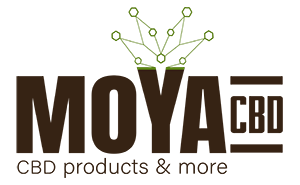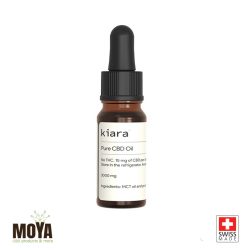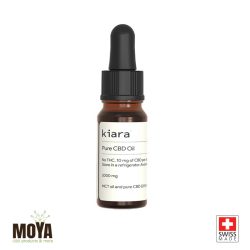Migraine Treatment: Natural vs Pharmacological Ways
Many of us are familiar with the phenomenon called migraine, a phenomenon in which without warning and early signs, a terrible headache arrives, suddenly pierces the head with a sharp and crippling pain to the point of dysfunction over time. The migraine phenomenon is a cyclical phenomenon, it is repeated in different time cycles, sometimes once a month and sometimes in a different sequence of times. Migraine sufferers are looking for many solutions and are even willing to try everything, in order to get rid of this crippling phenomenon, which sometimes combines in addition to the headache of nausea and vomiting, and interferes with daily functioning. The migraine phenomenon is treated with various pills and some prefer natural treatment with migraine that causes relief of symptoms.
Migraine: General information in a nutshell
Separate normal headache and migraine. Those who experience a migraine will do everything in their power not to experience it again. Migraine manifests itself in pain that pierces the skull, beats on one side of the head in the area of the tissues, nausea, vomiting and crippling sensitivity to noise and light. The migraine is an ancient disease that was discovered in ancient Greece and was then called HEMICRANUA, which means half a head.
This is due to the quality of the pains to focus on one part of the head. For years, the migraine was accidentally associated with one of the blood diseases, but today it is associated with brain diseases. Medicine has no conclusive answer to the causes of migraine, it is known that women suffer three times as much as men from migraines since the causes of the phenomenon are hormonal changes. In many women, migraine attacks usually appear before or after menstruation. Other triggers known to encourage the arrival of a migraine attack are: stress, mental stress, various foods, low drinking, certain smells and changes in sleep habits.
CBD and treatment of headaches and migraine
Headaches are often due to the narrowing of blood vessels in the brain. Cannabidiol is known to dilator small blood vessels, as well as soothing and balanced blood pressure. As such CBD is found to be very effective as a natural painkiller in the treatment of headaches and migraine. The first studies in the field supported a longstanding tradition of cannabis use to relieve headaches.
In 2008, the Endo-cannabinoid deficiency theory was suggested to claim that the three diseases: Migraine and fibromyalgia and irritable bowel syndrome, have similar, biochemical and pathological symptoms and physiological.
This theory links the symptoms of diseases to the Endo-cannabinoid System and assumes that its dysfunction, resulting from a lack of Endocannabinoid production from an internal source in the body, can be solved by supplying cannabinoids from the cannabis plant. Since the first studies in the treatment of headaches by CBD and THC it has been over a decade and today the culture of personal evidence of people who experience self-treatment with CBD oil for the purpose of reviving headaches.
The study itself continues to examine new mechanisms of action and classify the medical activity of cannabidiol according to the types of headaches.
Our recommended products for relieving headaches and migraines:
Does CBD become the most effective natural treatment for reindess of headaches and migraines?
In addition to the direct ability of cannabidiol (CBD) in the treatment of pain symptoms arising from headaches and migraines it can also help indirectly:
In the treatment of sleep disorders, appetite balances and treat nausea and vomiting The balance of blood pressure general calm and reduce stress
To this day it has been found that CBD relaxes and sticks:
- Cluster Type Headache
- Migraine Stress
- Stress Headache
For advice and guidance with Moya-CBD’s team of experts call or go to our contact page and leave a message – send a message to the MOYA team
Learn more:
- The endocannabinoid system and migraine
- Cannabinoids and hallucinogens for headache
- Cannabinoids suitable for migraine prevention
Study reveals CBD is an effective migraine treatment
According to the results of a recent study, a significant majority of migraine patients found relief in the use of CBD oil. Data from a clinical verified survey showed that 86% of respondents reported a decrease in the effect of headaches after using cannabidiol (CBD) for a 30-day trial period. The survey was conducted by customers using a CBD oil product designed by Axon Relief, which creates specific supplements for migraine sufferers. The headache impact test (Hit-6) measures the effect headaches have on the respondent’s daily life and ability to function.
Although some studies have shown that migraine sufferers report greater cannabis relief than with prescription drugs, clinical studies specifically focused on the effect CBD can have on migraine have not yet been conducted. However, a 2018 study found that cannabidiol has several pharmacological properties, including anti-inflammatory action and strong antioxidant action, which are successfully used to treat migraine. From the new study: “Our goal is to see if CBD can help people with chronic headaches, such as migraines.
The results of the survey are promising. Participants completed the Hit-6 survey before and after the use of CBD oil. During the 30-day trial period, subjects experienced an average of 3.8 days less headache than before using CBD oil, a 23% decrease. Those with chronic migraines, defined as people who experience 15 to 29 days of headache over 30 days, saw a 33% decrease in the number of days of their headache.
A billion people suffer from migraines worldwide! Migraine is one of the most common neurological diseases in the world, according to information from the Migraine Research Foundation, which affects about 39 million people in the U.S. and about 1 billion worldwide. Symptoms, which can often go off, can include severe headache, dizziness, nausea, visual disturbances and severe sensitivity to light or sound. Migraine disease is usually treated with strong medications, although with different results. “Since the 1990s I have been at regular doses of carbamazepine and gabapentin.
Periodic pain breaches were only controlled by hydrocodone, which always made me feel uncomfortable”, wrote Glenn, a participant in Exxon’s informal study. ‘What a change CBD oils have made no more carbamazepine or hydrocodone, and only half the back – and better pain control. Pain outbreaks still occur, but another drop of CBD , and the pain disappears within 15 minutes. I don’t have any side effects”.
Another study participant said that CBD significantly helped his chronic migraines. “If he was taken at the beginning of the seizure, I can count on him to shorten the duration of the seizure relatively quickly.” Of the 105 people who participated in the Exxon trial, 15 reported experiencing daily headaches at the start of the study. At the end of the 30-day trial period, the number dropped to 10, a decrease of 33%.
More research is needed: While Exxon’s research was conducted without the scientific rigor of gold-standard clinical trials, the Hit-6 survey results highlight the need for more CBD research as a possible treatment for migraine sufferers around the world. It is important to note that while there is a wealth of anecdotal-individual evidence of people using CBD oil with good results for migraine, very little is in the way of standard results, namely a study with a comparison group taking a dummy drug.
Cannabinoids suitable for migraine prevention The study confirmed that cannabinoids are just as suitable as preventing migraine attacks like other drug treatments. It is interesting that when it comes to treating acute cluster headaches cannabinoids are only effective in patients who suffered from migraines as children.
Germany’s recent decision to allow the use of cannabis for medicinal purposes has reignited the debate over policy across Europe. The progress is reflected in the results of a recent Italian study presented at the Third Congress of the European Academy of Neurology (EAN).
A research team led by Dr. Maria Nikoludi studied the suitability of cannabinoids as a prevention of migraine and in acute treatment of migraines and cluster headaches. First, the researchers had to identify the dosage required for effective treatment of headaches. A group of 48 chronically ill migraine volunteers received an oral starting dose of 10 mg from a combination of two compounds. One contained 19% tetrahydrocannabinol (THC), and the other had almost no THC and had 9% cannabidiol (CBD).
The result was that doses of less than 100 mg did not produce effects. Only when an oral dose of 200 mg was raised, the acute pain decreased by 55%. In phase 2 of the study, 79 chronic migraine patients received a daily dose of 25mg of amitriptylline – a tricyclic antidepressant commonly used to treat migraine – or 200mg from the THC-CBD combination for a period of three months. Forty-eight cluster headache patients were also given 200mg OF THC-CBD or a daily dose of 480mg of verapamil calcium channel blocker for acute pain, and 200mg of CBD was added to both types of headaches. The results after three months of treatment and follow-up after another four weeks yielded different insights.
While the THC-CBD combination produced slightly better results than amitriptylene (40.1%) with a 40.4% decrease in seizures, the severity and number of headache attacks in the cluster only decreased slightly. When they analysed the use of acute/immediate pain treatment, the researchers encountered an interesting phenomenon: cannabinoids reduced the intensity of pain in migraine patients by 43.5%. The same results were observed among cluster headache patients, but only in those who experienced migraines as children. In patients without a previous history, THC-CBD had no effect whatsoever as an acute treatment. The side effects observed during the study, such as sleepiness and difficulty concentrating, were extremely mild.
The incidence of abdominal pain, colitis and musculoskekeepian pain – in women’s subjects – has decreased.
Learn more –Effects of Anandamide in Migraine: Data From an Animal Model
Study: Migraine sufferers report that cannabis is more effective than conventional treatments.
Experience of migraine, its severity, and perceived efficacy of treatments among cannabis users. Migraine patients who use both cannabis and conventional migraine treatments say medical marijuana provides them with a greater degree of relief from their symptoms, according to data published in the journal Complimentary Therapies in Medicine.
A team of researchers from the University of Colorado examined patterns of cannabis use among 161 subjects who reported suffering from migraines. 76% of the study participants confirmed that cannabis use had benefited and improved their condition. Those who did so usually reported suffering from migraines more severely than those who did not.
The authors also reported that “among migraines that relied on cannabis products as well as non-cannabis products, cannabis products led to more significant migraine relief (90%) compared to non-cannabis products (60%), a finding that we believe was not previously reported.
“The authors concluded: “Our preliminary findings clarify the experience of migraine severity and migraine severity in a large sample of cannabis users [and] provide evidence of the benefit of migraine-related pain relief cannabis. Future placebo-controlled studies are needed to determine the most effective forms of consumption, potency, and dosages to alleviate migraine symptoms”. Survey data released in October reported that nearly a third of migraine patients tried cannabis to manage symptoms, and most of those who did so reported their efficacy.
Writing last July in the Journal of Integrative Medicine, a team of researchers at the University of New Mexico similarly reported that most subjects in their sample (94%) experienced migraine relief within two hours of inhaling marijuana. Separate data published last summer in the journal Brain Sciences reported that long-term cannabis inhalation is associated with a reduction in migraine frequency.
Another study, published in 2019 in the Journal of Pain, reported that “inhaled cannabis reduces headache and migraine severity ratings by about 50%”. A 2016 study of 121 migraine patients reported that the frequency of headaches decreased from 10.4 to 4.6 migraines per month after cannabis use began.
Can cannabis help treat migraine?
Migraine is a recurring headache syndrome that can last up to 72 hours if left untreated. About 14% of Americans, mostly women, suffer from migraines. Migraine symptoms include, among other symptoms, pulsating skull pain, nausea, sensitivity to light, dizziness, speech difficulties and confusion. It has been hypothesized that the endocannabinoid system plays a significant role in migraine pathophysiology [1-3] and some studies have identified differences in endocannabinoid system function and endocannabinoid production in migraine sufferers compared to other control groups [4-7].
Cannabis has a long history of human use in migraine treatment [8]. Literature reviews [9-10] and case reports [11-12] indicate that cannabis is effective for both treatment and headache prevention. Among medical cannabis patients, about two-thirds report a decrease in the use of conventional migraine treatment drugs [13-14].
However, there are others who report that they have not received therapeutic relief due to the use of cannabis [15]. A recent retrospective evaluation of 121 adults with an initial diagnosis of migraine reported that “the frequency of migraine headaches decreased from 10.4 to 4.6 migraine occurrences per month with medical marijuana use [16].
Clinical Trial Data presented in 2017 at the Third Congress of the European Academy of Neurology proved that daily administration of cannabinoid extracts resulted in a 40% decrease in migraine frequency in the group of 79 chronic migraine patients [17].
While the clinical trial data remain at this stage is not enough to definitively prove the effectiveness of cannabis or cannabinoids for the treatment of migraine “There are enough anecdotal and primary results, as well as reasonable neurobiological mechanisms, to justify further research, and it seems that cannabis will appear as a potential treatment for some of those suffering from headaches [18].
REFERENCES
[1] Dr Ethan Russo. 2016. Clinical endocannabinoid deficiency reconsidered: Current research supports the theory in migraine, fibromyalgia, irritable bowel, and other treatment-resistent syndromes. Cannabis and Cannabinoid Research 1: 154-165.
[2] Dr Ethan Russo. 2004. Clinical endocannabinoid deficiency (CECD): Can this concept explain therapeutic benefits of cannabis in migraine, fibromyalgia, irritable bowel syndrome and other treatment-resistant conditions? Neuroendocrinology Letters 25: 31-39.
[3] Greco et al. 2010. The endocannabinoid system and migraine. Experimental Neurology 224: 85-91.
[4] Cupini et al. 2003. Abnormal degradation of endocannabinoids in migrainous women. Cephalalgia 23: 684.
[5] Sarchielli et al. 2007. Endocannabinoids in chronic migraine: CSF findings suggest a system failure. Neuropsychopharmacology 32:1384–1390.
[6] Cupini et al. 2008. Degradation of endocannabinoids in chronic migraine and medication overuse headache. Neurobiology of Diseases 30: 186–189.
[7] Rossi et al. 2008. Endocannabinoids in platelets of chronic migraine patients and medication-overuse headache patients: relation with serotonin levels. European Journal of Clinical Pharmacology 64: 1-8.
[8] Dr Ethan Russo. 2001. Hemp for headache: an in-depth historical and scientific review of cannabis in migraine treatment. Journal of Cannabis Therapeutics 1:2 1–92.
[9] E. Baron. 2015. Comprehensive review of medicinal marijuana, cannabinoids, and therapeutic implications in medicine and headache. Headache 55: 885-916.
[10] Lochte et al. 2017. The use of cannabis for headache disorders. Cannabis and Cannabinoid Research 2 [open access journal].
[11] Ibid
[12] Robbins et al. 2009. Cluster attacks responsive to recreational cannabis and dronabinol. Headache 49: 914-916.
[13] Piper et al. 2017. Substitution of medical cannabis for pharmaceutical agents for pain, anxiety, and sleep. Journal of Psychopharmacology 31: 569-575.
[14] Sexton et al. 2017. A cross-sectional survey of medical cannabis users: Patterns of use and perceived efficacy. Cannabis and Cannabinoid Research 1: 131-138.
[15] Andersson et al. 2017. Psychoactive substances as a last resort – a qualitative study of self-treatment of migraine and cluster headaches. Harm Reduction Journal 14: 60.
[16] Rhyne et al 2016. Effects of medical marijuana on migraine headache frequency in an adult population. Pharmacotherapy 36: 505-510.
[17] EAN Congress Press Office. “Cannabinoids suitable for migraine prevention.” June 24, 2017.
[18] Lochte et al. 2017. op. cit.
Treatment of migraine through medications or natural ways
Treatment with medication
Treatment of a strong migraine through analgesics and substances from the Tripatan family, produces immediate relief but after about twenty-four hours their effect has expired, and the patient may suffer a recurrent migraine attack. Side effects such as chest pressure, general malaia, dizziness, and even pill addiction are also known to consider when using pills.
Treatment of strong migraine by natural means
Unfortunately, medicine does not yet have many solutions for migraine attacks, so the usual medical treatment is expressed in the provision of medications to reduce pain and other symptoms, starting with painkillers such as paracetamol, optalgin, migrant and other triptinal drugs , such as imtarex, rezalate, or zoming. Tripathans are chemical substances that simulate the serotonin substance found in the brain. They affect blood vessels by preventing their dilation and thus creating relief. Treatment for a naturally strong migraine can help both prevent the next seizure and help reduce symptoms and the intensity of the seizure and is very common among those suffering from the phenomenon. The principles of natural migraine treatment are based on returning to nature, with the goal of finding the source of the problem to eradicate it altogether. The findings of studies prove that there is a link between diet and migraine and that certain foods are migraine-triggering and avoiding them helps prevent the following seizure , and these are: Meat: Especially smoked, canned and sausage meat. Processed dairy products and processed cheeses, containing tyramin created when the protein breaks down in food. Fruits: Citrus fruits, kiwis, papaya, figs, avocados and bananas. Breads: And every yeast pastry includes sourdough bread. Vegetables: Onions, fresh garlic, Chinese peas and beans. Drinks that contain caffeine, alcohol, especially champagne, red wine and beer. Spices: Containing salts and preservatives that expand blood vessels such as soy, Asian sauces including soup powders. Pickles: Which have been missed like cucumbers and olives. Other foods: Include dried fruits, chocolate, pizza, artificial sweeteners, nuts, smoked fish and peanuts. It is recommended to consider natural treatment on two levels, first achieving immediate relief for example with acupuncture, and personalized dietary changes that will prevent the return of seizures and side effects. Click here for details on CBD oil.
Headaches, Migraine
Headache is a relatively common phenomenon, occurring in about 4% of the population. In general, a headache can be benign such as a chronic migraine headache, but sometimes a headache implies a process such as a tumor, subarachnoid bleeding and other processes, which must be treated quickly since some are life-threatening. Headache with sharp and acute development The headache can be acute (acute) – this pain develops suddenly and is turbulent. The common causes of this type of headache are subarchnoid bleeding (subarachnoid brain hemorrhage), various cerebro-vascular diseases, meningitis or encephalitis, as well as conditions such as glaucoma. Headache with sub-acute development This headache develops within days and in a less turbulent way. The common causes of such pain include temporal arteritis, the process of intracranial tumour, cerebral hematoma or intracerebral abscess, increased secondary intracranial pressure for a simulated brain tumour, neurolegiology of the trigeminal nerve, hypertension and more.
Chronic Headache
Defined as a headache that appears over 15 days a month and at least for 3 months. It is customary to divide the chronic headache into two groups: 1. Secondary chronic headache such as: secondary to vascular diseases such as salute artery inflammation, vascular wall inflammation (vasculitis), chronic subdoural blood. Rupture within the wall of a cervical artery (in the throes, or disciples), obstruction of intracranial venous sinuses and more to increase intracranial pressure as a result of a tumour or mock tumour (pseudotomore). Secondary to intracranial pressure (as after a waist peck – in some cases). Chronic infectious diseases like tuberculosis or HIV. Diseases of the cervical spine. Diseases of jaw and tooth joints. Secondary to head trauma. Secondary to depression. 2. Primary chronic headache such as: Chronic migraine that occurs more than once a week. Headache as a result of overuse of anti-pain medications and addiction to some of these drugs. Chronic angina headache. Offensive mykrenia. Chronic cluster headache.
Cluster Type Headache
This type of headache is characterized by many sharp and strong pain on one side of the head. The pain is usually concentrated around the eye and lasts up to 60 minutes. Headaches of this type come from time to time, and during the period in which the person suffers from them they can be extremely frequent. Sometimes the person reports years without seizures. Sometimes it is possible to locate a pattern that causes cycles such as weather or special events but many times there is no explanation for the appearance or disappearance of the headaches. Usually, headaches of this type will not be affected by environmental factors such as light, noise or smell and are not accompanied by feelings of nausea or vomiting. On the side where the headache is concentrated the person can experience a teary eye, runny nose, dropped eyelid and swelling in the area below the eye.
Migraine
Migraine is a headache accompanied by a feeling of pulse or beats whose intensity is moderate to strong, it lasts between one and 72 hours (although some people suffer from longer migraines). Among two-thirds of migraine sufferers, the headache is focused on one side of the head (the origin of the name migraine is in the disruption of the word migraine – pain on one side of the head), and about a third of migraine sufferers report that the headache is all over the head. Migraines are sometimes accompanied by feelings of nausea and vomiting and sensitivity to light, noise or smell, and can worsen as a result of exposure to these or as a result of physical activity. Seizures of migraines can last a long time or arrive very frequently and then disappear for long periods of weeks, months and even years. About two-thirds of people with migraines will feel that the migraine begins or they will experience precursors to migraine.
Stress-related headache (Tension Type Headache)
The headache is weak to moderate, it affects the whole head and the sensation is of tightening a strap or rubber band around the head. The headache can last from half an hour to a few days and will often worsen towards the end of the day. Unlike migraines, there is no worsening as a result of physical activity or exposure to environmental factors such as lights, smells or noise. Also, this type of headache is not accompanied by nausea or vomiting.
Want to experiment with quality CBD products?
MOYA recommends several products suitable for treating a variety of problems, it is worth taking a look at the store and learning our many products. For free advice and to select the right product for you – contact us




